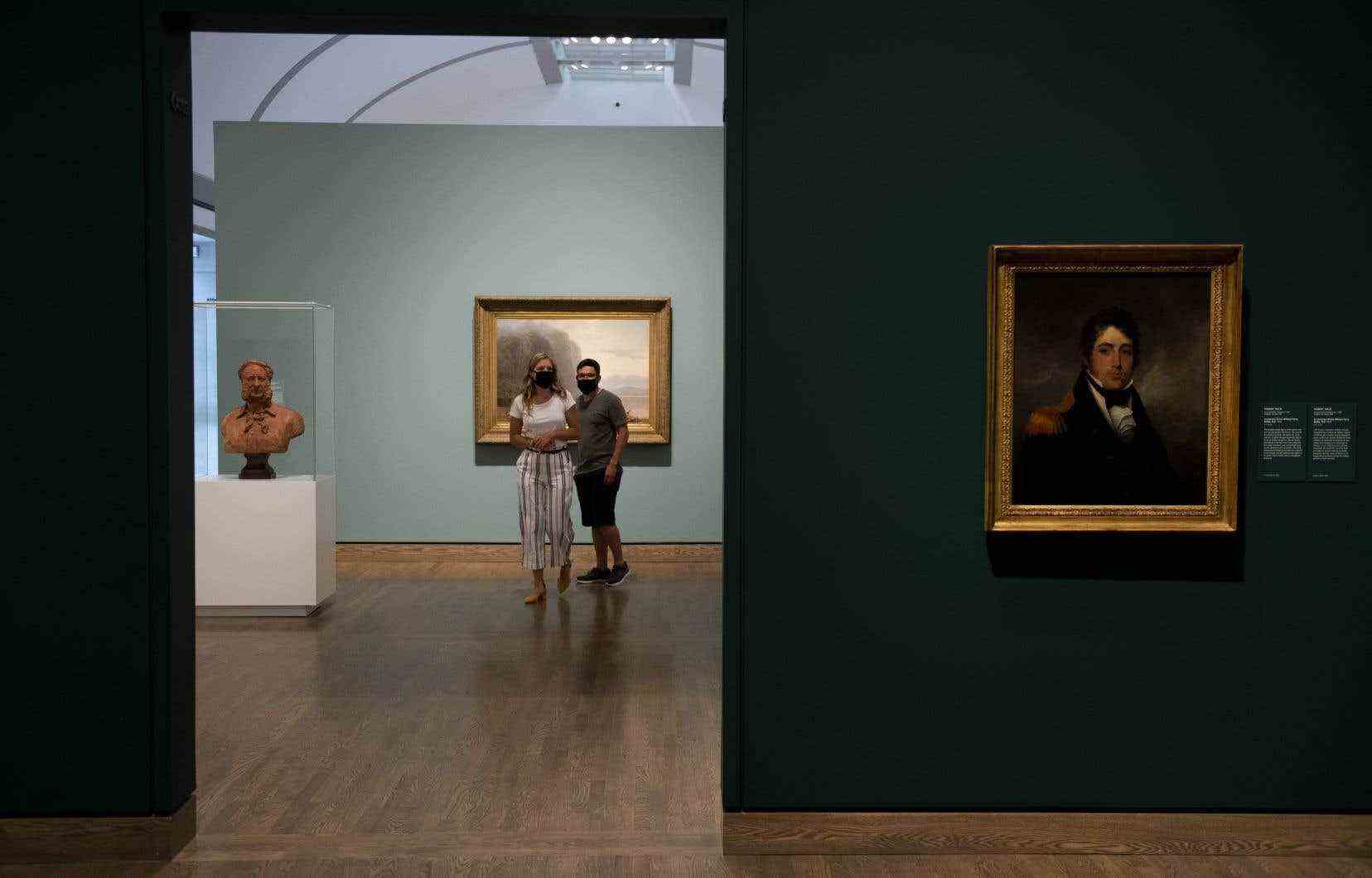The Huron-Wendat Élisabeth Kaine is one of the rare university researchers of Aboriginal origin. She participated in the preparation of several exhibitions on the cultures of the First Nations and Inuit of Quebec and published “Story of an Aboriginal incursion into museum territory” in the 2021 issue of the ICOFOM magazine, Decolonizing museology. She holds the UNESCO Chair in cultural transmission among First Peoples as a dynamic of well-being and empowerment at UQAC. Interview by Stéphane Baillargeon.
How do you judge the crisis created at the National Gallery of Canada by the implementation of the Strategic Plan around decolonization?
I am not aware of the details of the case and therefore do not wish to comment on this particular case. I can say, however, that wherever I see actions of decolonization, it may become dangerous to act at all costs and quickly. Is it even possible to do this smoothly? Personally, I would tend to say yes, if we do so in conversation. We need to talk a lot about it. The people replaced must themselves take part in the reflection. We have to find ways to decolonize.
What does it mean to decolonize a museum?
The word didn’t exist when I started in museology thirty years ago. The term arrived here in discourse no more than a decade ago, after the Truth and Reconciliation Commission. I learned to understand this concept at the same time as everyone else. It was something that I was doing and which boiled down to trying, as an Aboriginal person, to have the freedom to assert my point of view in my university teaching as well as in my research and work in museology. For me, that meant: breaking down doors to say what I want to say as an Indigenous person and carry the voice of my compatriots. The sad thing is that I should have been able to carry that voice without spending 70% of my energy convincing others that that word is valid. That is what is not normal, that is what is colonial and that is what must be destroyed.
What are the consequences of this colonial practice?
It’s not completely dark, in the sense that now we’re being asked our opinion. Fifteen or twenty years ago, we were never asked. Western Canada has been at the forefront of change, including the Museum of Anthropology at the University of British Columbia. In Quebec, it was slow. I was asked to collaborate with the Musée de la civilization for the exhibition This is our story. First Nations and Inuit of the 21ste century, presented in 2013. I was asked to do so more recently at the McCord Museum. But once in the process, we can see that it blocks. It is diffused in the culture of the place, in training, in the role of experts who believe they hold the knowledge. I don’t want to accuse anyone in particular. It is in the culture of the institution. Yes, they invite me, they want me, they have the funds. But the staff has not been trained to change perspective and, in the preparation of an exhibition, one deals with many professions. If it stumbles every time, it’s tiring. Staff must be trained in decolonization and other forms of oppression. I train master’s students and, in 45 hours, it’s over.
Can you give us a concrete example of blockages?
I worked in consultation for a museum that is not worth naming. We visited 18 communities. I wore two hats, university researcher and museum consultant. I therefore represented two colonialist institutions for the First Nations. I thought it would be difficult with the communities. On the contrary, it was a charm. But with the museum it was hell because of the attitude of the staff. At the first meeting, in Restigouche, I said that we shouldn’t talk, but listen, that we shouldn’t even talk about the exhibition right away. The first thing a museologist did was to distribute leaflets on the communities and their culture produced ten years earlier by the museum in a completely colonialist way, without consulting them. He immediately positioned the institution as an expert on Aboriginal peoples. So we got kicked out of the community. The culture officer in the community stood up and said, “Your pamphlets are crap, that’s exactly what we don’t want anymore and get out of here!” »
Why is it so important to decolonize museums?
For historical reasons. The museum is the symbol of appropriation. Indigenous nations have been dispossessed of their material cultures almost 100%. There is almost nothing left in the communities, and it is a lot of the museums that have collected – and, in a sense, we can say to ourselves “a chance” since there might not be much left since the communities were kept in poverty and ignorance, without means, without the possibility of preserving the collections, especially not the nomadic peoples.
All material cultures have therefore found themselves outside their sights, in urban centers, while Aboriginal people are out of the way. This culture is therefore no longer available for intergenerational transmission or rituals. In Aboriginal thought, objects have a soul. When we say “museum” to Aboriginal people, the synonym is dispossession. In this whole trend of cultural reappropriation, we want to get our objects back, we want to decide how to use them, we want to reconnect with the spirit of our objects.
You even want the museum to become a place of healing. Isn’t it beautifulsuddenly ask a cultural institution?
A whole movement in museology is questioning this idea. Personally, everything I do in developing collaborative practices is aimed at this First Nations healing goal. If I have a mandate with a museum, the work in preparation must become a healing enterprise.
